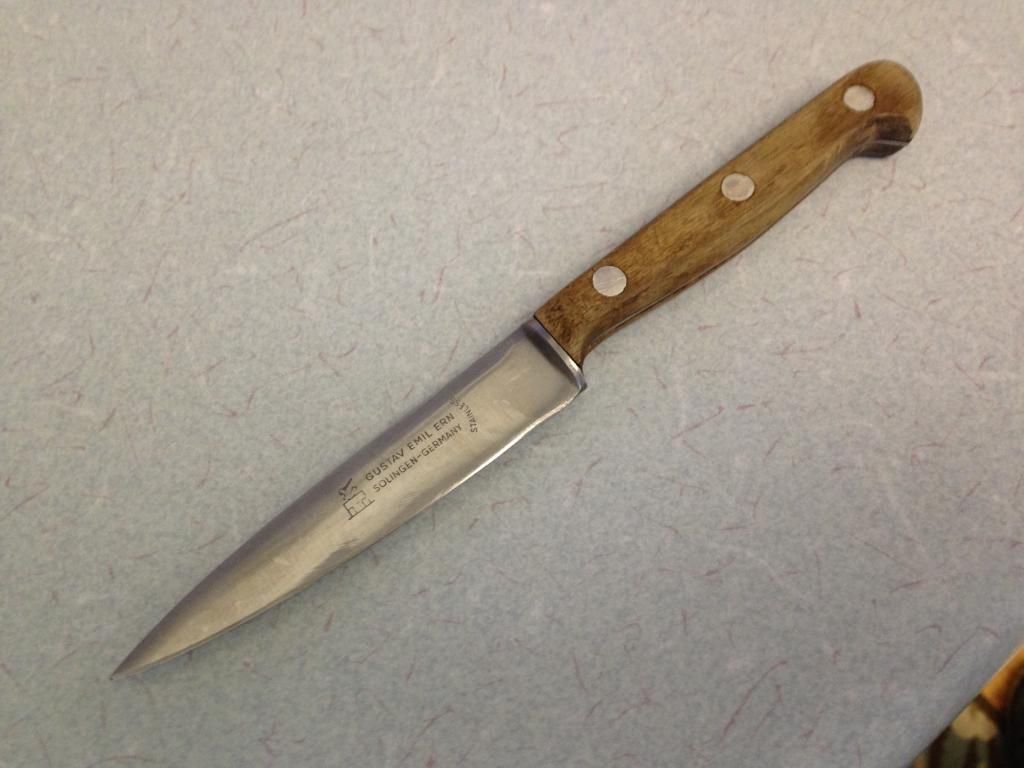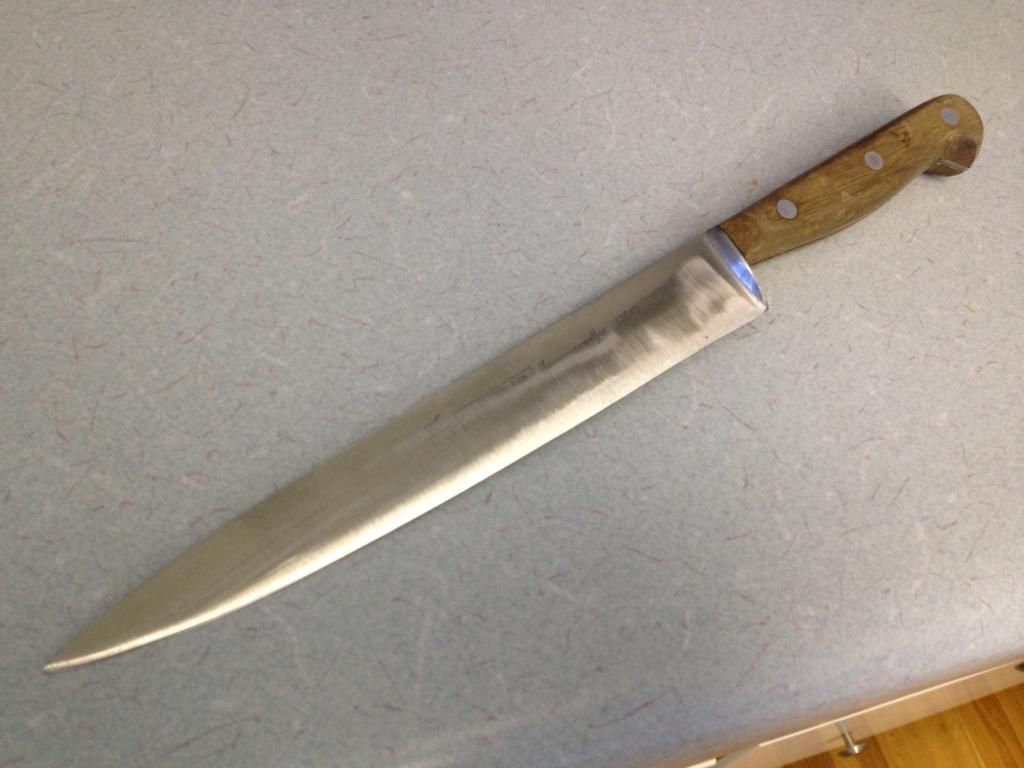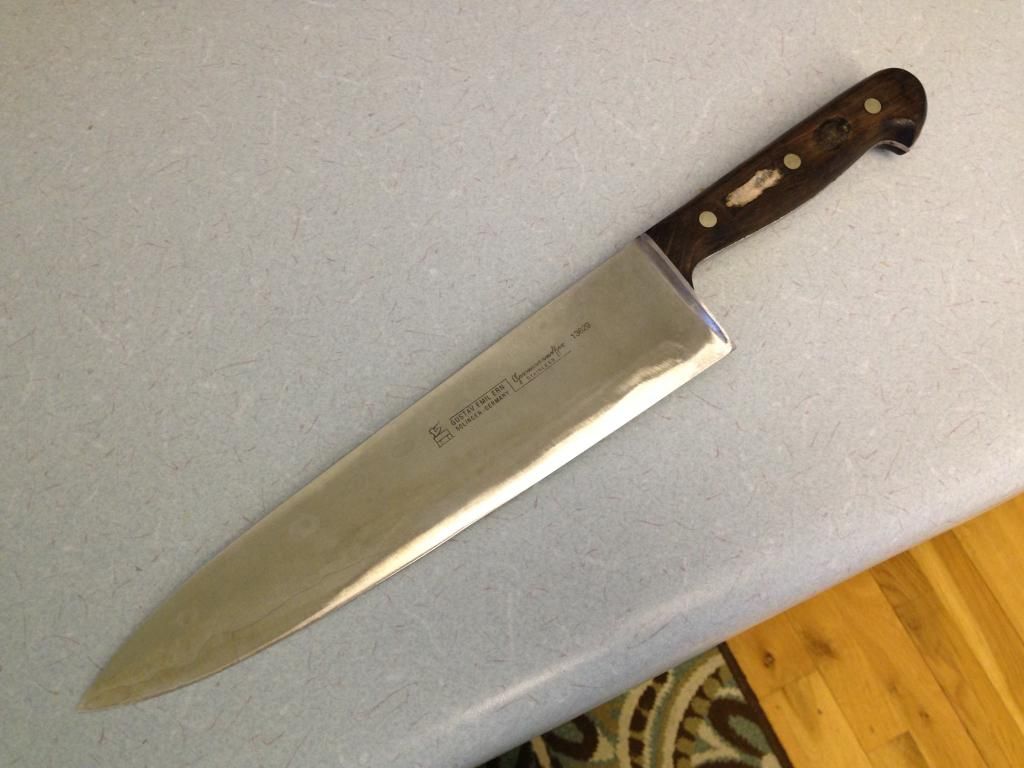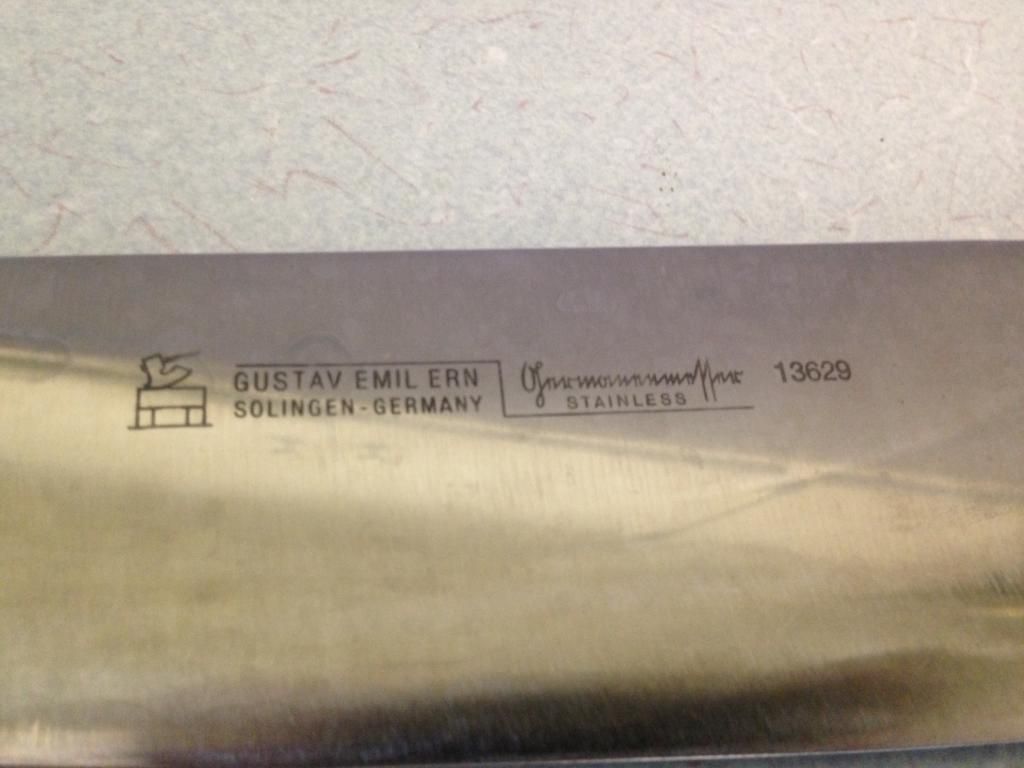Hello!
So I'm completely new to quality kitchen knives, but we just received a bunch of hand me downs from the in-laws that included a number of knives. So I figured I would look around on the interwebs for some more info on them. I ended up here, and this seems like a nice place.
So the knives we received are Gustav Emil Ern pieces. They were probably purchased in the 1970s. I'll try to post some pictures at the end of the post, but we got blade lengths of 4, 8.5 and 10.5 inches. The largest knife is a monster and makes me feel like a superhero when I use it. So, a few questions.
How do I take care of them? Hand wash and dry, I'm assuming, but anything beyond that?
How should I sharpen them? In their past life, they had been taken to a butcher for sharpening. Wet stones are obviously preferred here, so what are the downsides of having them sharpened by someone else?
I like the knives and would like a few more, ideally similar to these three. Maybe a 6 inch utility knife and a 8 inch chef knife (my wife doesn't like the beastly 10.5 incher - evidently size does matter). Other than scouring ebay, are there any other spots I can find vintage knives? Alternately, if I can't find anything vintage, which new knives would be roughly the same in quality and construction?
Lastly, the larger two knives have some sort of script word on it that looks like GrumonunumrNur. I'm assuming it's Dwarven. Any idea what it says?
Too many questions. I'll stop now. Thanks for any info. Now to try to add some pictures...




So I'm completely new to quality kitchen knives, but we just received a bunch of hand me downs from the in-laws that included a number of knives. So I figured I would look around on the interwebs for some more info on them. I ended up here, and this seems like a nice place.
So the knives we received are Gustav Emil Ern pieces. They were probably purchased in the 1970s. I'll try to post some pictures at the end of the post, but we got blade lengths of 4, 8.5 and 10.5 inches. The largest knife is a monster and makes me feel like a superhero when I use it. So, a few questions.
How do I take care of them? Hand wash and dry, I'm assuming, but anything beyond that?
How should I sharpen them? In their past life, they had been taken to a butcher for sharpening. Wet stones are obviously preferred here, so what are the downsides of having them sharpened by someone else?
I like the knives and would like a few more, ideally similar to these three. Maybe a 6 inch utility knife and a 8 inch chef knife (my wife doesn't like the beastly 10.5 incher - evidently size does matter). Other than scouring ebay, are there any other spots I can find vintage knives? Alternately, if I can't find anything vintage, which new knives would be roughly the same in quality and construction?
Lastly, the larger two knives have some sort of script word on it that looks like GrumonunumrNur. I'm assuming it's Dwarven. Any idea what it says?
Too many questions. I'll stop now. Thanks for any info. Now to try to add some pictures...








